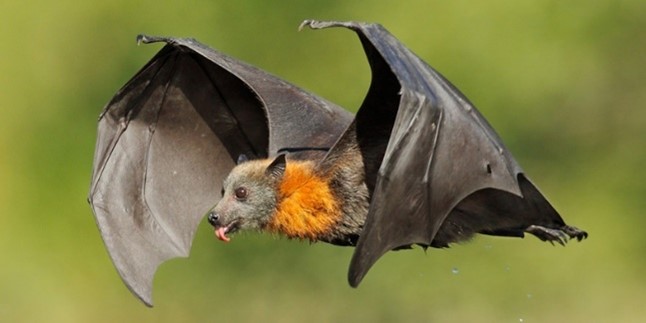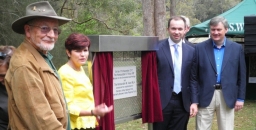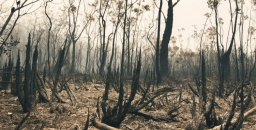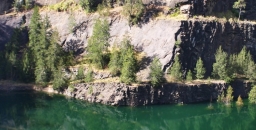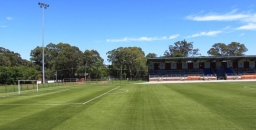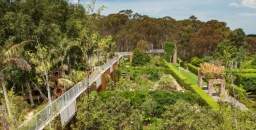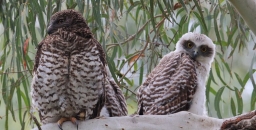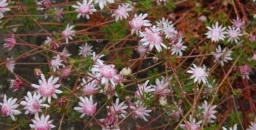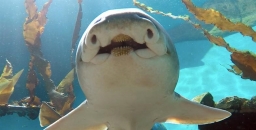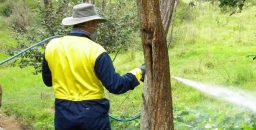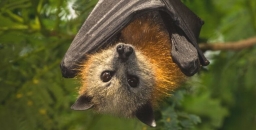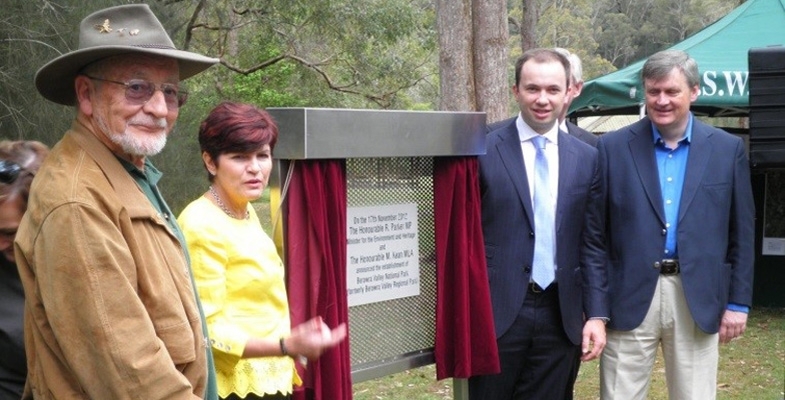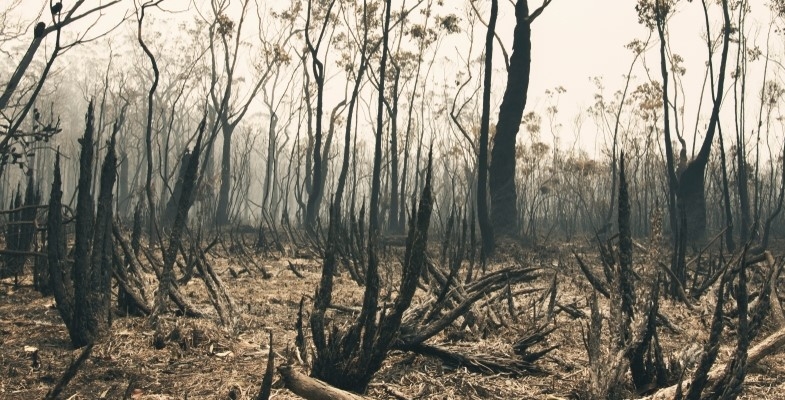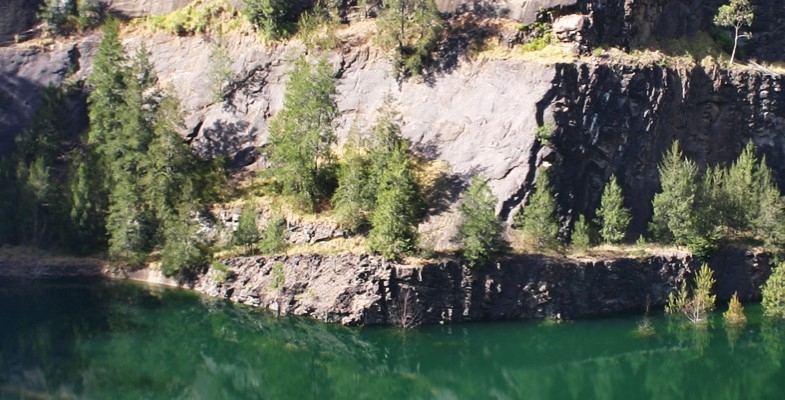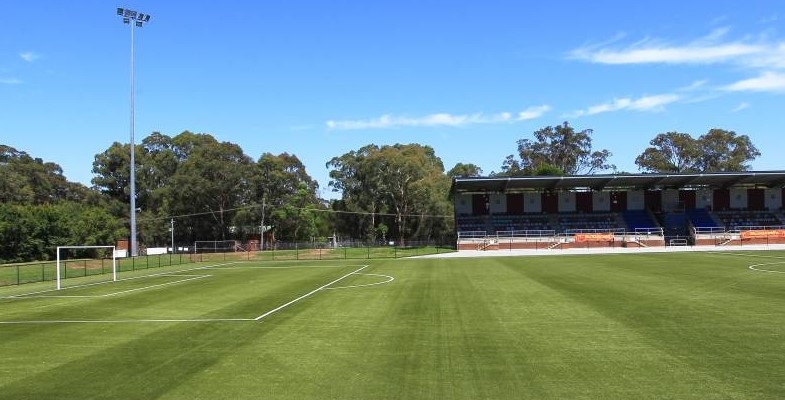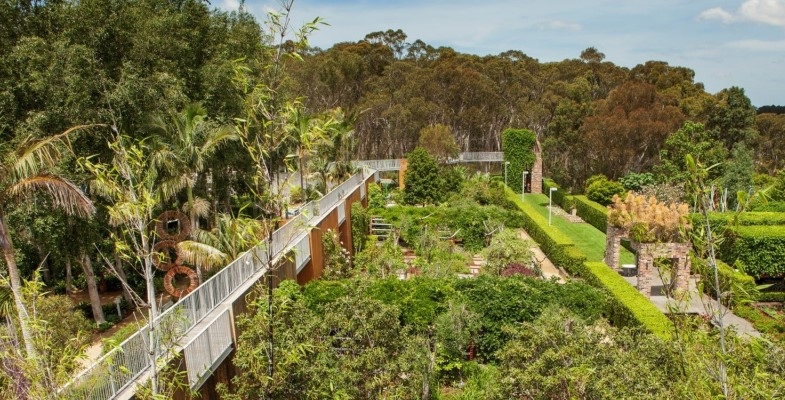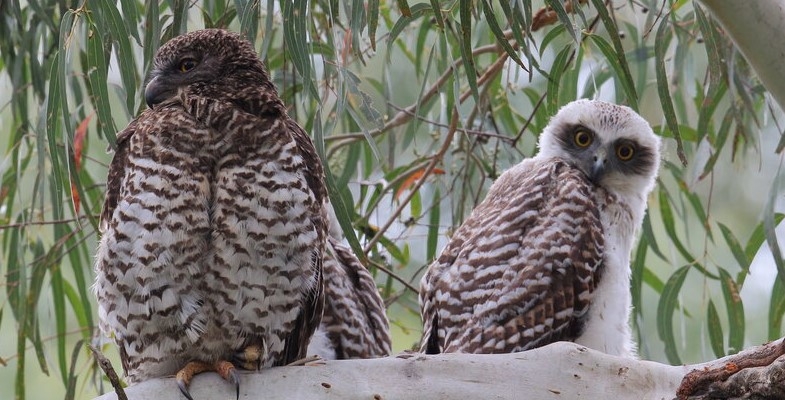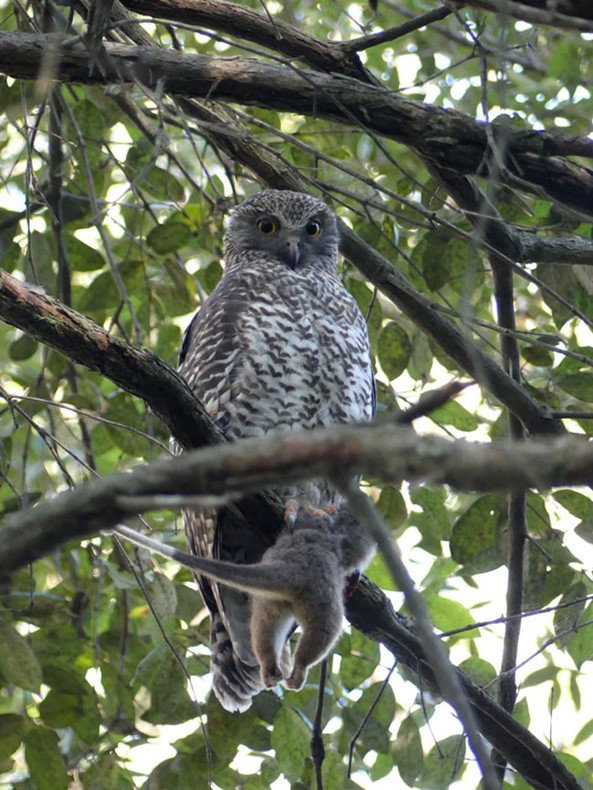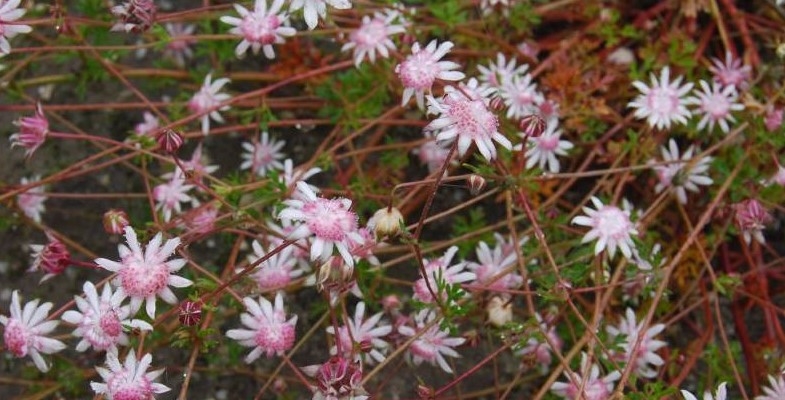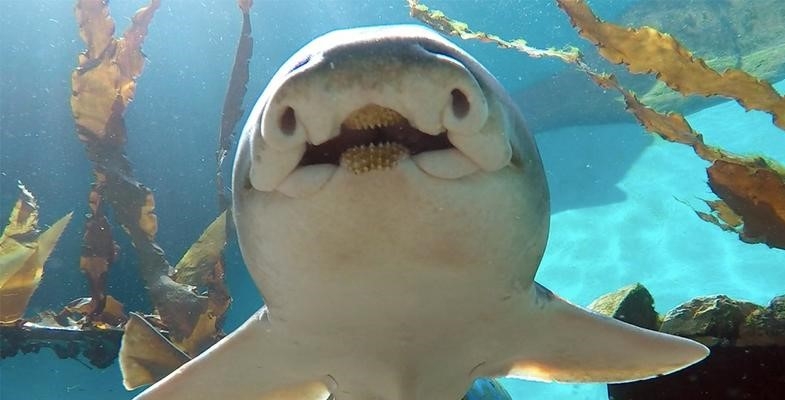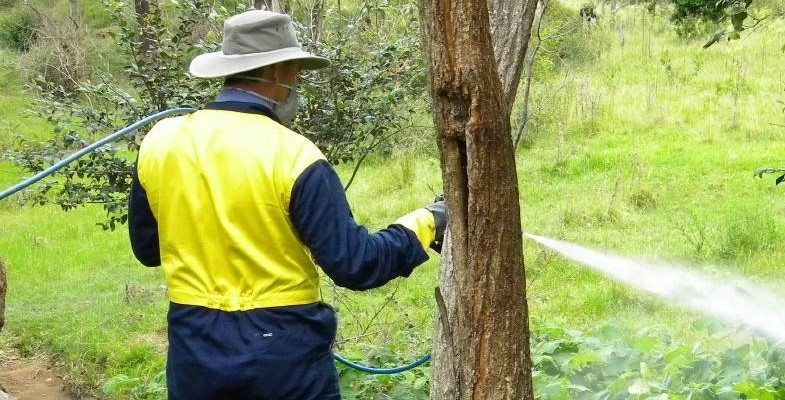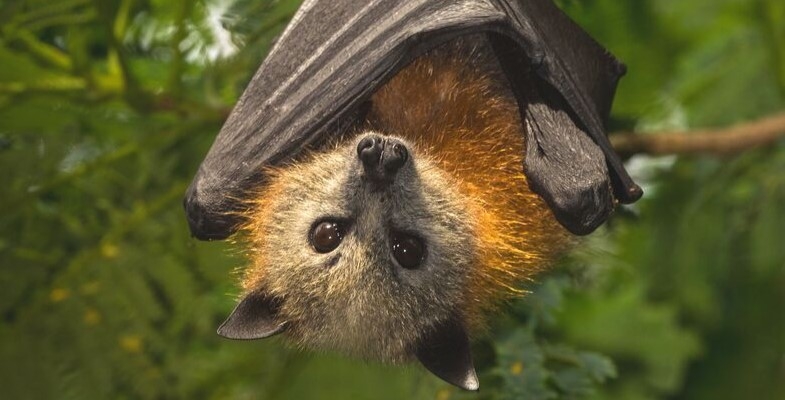STEP Matters 210
- Default
- Title
- Date
- Random
- The Friends of Berowra Valley are sad to report the death of founding chair, Robert ‘Bob’ Salt OAM on Easter…Read More
- We are pleased to announce that the recipient of the John Martyn Research Grant for 2021 is Erin Rogers. She…Read More
- The long-awaited plans for the redevelopment of Hornsby Park and Westleigh Park are now open for submissions until 2 June.…Read More
- In the November 2020 issue of STEP Matters we outlined the current issues with proposals to install synthetic turf on…Read More
- We have just found out about a proposal for an 18-storey office tower to be built on the Eden Gardens…Read More
- Picture this: you’re in your backyard gardening when you get that strange, ominous feeling of being watched. You find a…Read More
- The devastating fires over the Black Summer in the Blue Mountains have produced one remarkable display, the pink flannel flower…Read More
- Arguably there are fewer animals in the world that are feared more than sharks. But the reality is that they…Read More
- Glyphosate, most commonly marketed as Roundup, is extensively used as a herbicide in agricultural areas and bushcarers know how effective…Read More
- It is 20 years since the Grey-headed Flying-fox was listed as a threatened species under NSW and Commonwealth legislation. This…Read More
Vale Bob Salt
The Friends of Berowra Valley are sad to report the death of founding chair, Robert ‘Bob’ Salt OAM on Easter Monday at Bowden Brae Nursing Home.
Bob was largely instrumental in having the Berowra Valley Regional Park declared the Berowra Valley National Park in 2012. He contributed important sections to the Guide to Berowra Valley Regional Park published in 2004 and was involved in the production of the Walking Guide to Berowra Valley National
Park in 2014.
In a speech supporting the National Parks and Wildlife Amendment (Adjustment of Areas) Bill 2012 that led to the creation of the Berowra Valley National Park, Matt Kean said:
Sixty years ago, Bob Salt found this beautiful part of the world and set about fighting to protect it for future generations to enjoy. Bob has lobbied, fought, harassed and made this possible. He has been a wonderful advocate for this remarkable and special part of Sydney. Future generations will owe Bob a great debt. I know our community certainly does.
In 2011 Bob was awarded an OAM for service to conservation and the environment through a range of organisations in the North Sydney region (see photo). He has worked for the conservation and effective management of Berowra Valley bushland since 1962 to the present day.
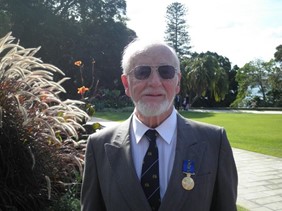
John Martyn Research Grant Award for 2021
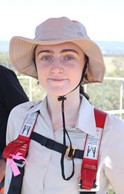
We are pleased to announce that the recipient of the John Martyn Research Grant for 2021 is Erin Rogers. She has provided the following description of her work.
I have a keen interest in plant science and ecology and am particularly passionate about how plants respond physiologically to changes in environmental conditions. I have a foundational background in Environmental Biology, having completed my undergraduate degree at UTS at the end of 2020. I have also worked in bush regeneration within the greater Sydney region for over three years. This sparked my love of plants and my curiosity into understanding the many wonderful ways in which they survive.
Having started my master of research with the Hawkesbury Institute for the Environment at Western Sydney University at the beginning of this year (2021), I was keen to explore how nutrients in the soil limit plant growth and function. Given that low phosphorus soils predominate across Australia and Sydney’s east coast, I aim to investigate phosphorus limitation on photosynthesis on a range of native plants with my thesis titled: The Rich and Poor: Plant Phosphorus and Photosynthesis Follow Soil Fertility.
Under the John Martyn Grant for the Conservation of Bushland I will investigate the effects of increasing fire severity and subsequent phosphorus liberation on the re-growth capacity of native plants. This grant will allow me to explore an area of phosphorus limitation that would otherwise not be examined under my master of research thesis. This research aims to provide a unique insight into species recovery and will give a snapshot of how quickly our native plants can respond to different levels of fire disturbance.
I would like to thank STEP and its members for this opportunity, and I am keen to get out in the field and start this research.
Hornsby and Westleigh Parks: Masterplans out for Consultation
The long-awaited plans for the redevelopment of Hornsby Park and Westleigh Park are now open for submissions until 2 June. There is a planned link trail between the two parks.
Westleigh Park
We have written about Hornsby Park and the Quarry several times in STEP Matters. Westleigh Park is another important bushland site in the Hornsby Shire. The land was owned by Sydney Water until 2016 when it was purchased by Hornsby Council with the main objectives of providing future recreational opportunities and for conservation purposes.
The site covers 34 ha and contains a mix of open space and bushland. The land has not been managed so mountain bikers have taken the liberty to construct 9 km of tracks over the site.
Hornsby Council has undertaken various studies of the site. Vegetation mapping has identified critically endangered ecological communities, Sydney Turpentine Forest and endangered Duffys Forest that council is obliged to conserve and protect. There are also other large areas of quality bushland and threatened plant and animal species.
Studies undertaken of the current unauthorised trails identified soil degradation, contamination and asbestos. The exposed asbestos is managed by monitoring and removal when required but there is buried asbestos that needs to be dealt with.
TrailScapes Pty Ltd, an international trail building company, undertook a study in 2018 of options for restructuring the mountain bike trails network. Their report summed up the current state of the trails as:
In its current form the trail network is unsustainable and not ‘maintainable’. The appropriate management of water is key to a sustainable trail network. A network that continues to erode and pool water not only contributes to erosion but also edge effects such as trail creep (widening) as riders trample vegetation by riding around erosion gullies, pooling water and deteriorating trail features.
In the draft masterplan the bike trails have been reduced considerably. They have been moved to the margins of the endangered ecological communities (EECs) rather than cutting through them. Some bushwalking tracks are proposed that will to go directly through the EECs. The management plan must prevent bikers using these walking tracks.
Clearly existing trails have to be shut down and rehabilitated. The mountain biking fraternity is up in arms fighting the proposal with many people signing petitions and commenting on Facebook. We need submissions to express the importance of fixing the damage and ensuring the bushland is preserved.
The masterplan includes three sporting fields with one proposed to have synthetic turf for soccer and AFL. This is another bone of contention – see Opposition to Synthetic Turf is Growing.
The two projects will be staged over several years with the Westleigh project being given lower priority. The rehabilitation of the mountain bike trails should be given a high priority.
Link Track
A link track will be built between the two sites using existing walking tracks and fire trails but some new tracks will be required plus a bridge over Waitara Creek. Details are not clear at this stage.
Hornsby Park

The masterplan is full of glossy diagrams with huge file sizes. There are several precincts including the Old Mans Valley sporting field area, the crusher plant, the Higgins cemetery as well as the Quarry void area.
The environmental status of the precinct is crucial given the rare bushland vegetation that includes Powerful Owl nesting sites and its proximity to Berowra Valley National Park.
The park is close to the Hornsby residential area and many more apartment buildings are proposed. It is important that the park provides facilities for families as well as sporting groups.
STEP has several concerns about the plan in its current form. Some details are still to be worked out so there is currently plenty of opportunity to express our views and counteract the influence of the mountain bikers.
In brief our main concerns are:
- The existing mountain bike tracks in the Blue Gum Diatreme Forest and high-quality Blackbutt Forest should be closed down.
- There are few walking tracks and these conflict with the mountain bike trails.
- The only space for general informal community use is in the Quarry void where there appears there will be large open space with no trees. This would be very hot in summer.
- The sporting field in Old Mans Valley, close to the suburban area, will have synthetic turf surface. This makes it unsuitable for general public use and will be a bushfire hazard.
- It appears that extensive lighting is proposed that will impact on nearby nocturnal wildlife, particularly the Powerful Owls.
Opposition to Synthetic Turf is Growing
In the November 2020 issue of STEP Matters we outlined the current issues with proposals to install synthetic turf on Barra Brui Oval and Norman Griffiths Oval in West Pymble. There are some local issues relating to these fields but the use of synthetic turf has grown into a major concern all over Sydney.
Ultimately Ku-ring-gai Council decided not to proceed at Barra Brui. At their meeting on 30 June 2020, it was resolved to carry out preliminary design studies but they have not yet been seen. At the March 2021 meeting it was decided that there was insufficient parking space for this field to become the planned major hockey centre for northern Sydney; alternative venues are being assessed but may be hard to find.
Ku-ring-gai Council is proceeding with the detailed planning for the installation of synthetic turf at Norman Griffiths Oval. A community reference group was established, including representatives from the soccer club, local bushcarers, local residents and STEP. We hope to get details of the construction process and drainage measures.
We are concerned about the design of the field. The level of the field will be 0.5 m higher than its current level. At this stage, cork is to be used as the infill product rather than tyre crumb. Fencing will be required to maintain the higher surface. Will fencing limit the use of the field for the local community for informal sports and dog walking?
Major reworking of the drainage system is required as the field is a stormwater detention basin and Quarry Creek flows under the existing field then flows into the Lane Cove River.
The impact of these works on the Sydney Turpentine Ironbark Forest and other native vegetation surrounding the field and Quarry Creek, is unknown.
Issue throughout Sydney
Many other councils are at various stages of planning to install synthetic turf and there is strong opposition from local communities. Some contentious projects are:
- In the Bayside LGA, the Friends of Gardiner Park in Banksia went to the Land and Environment Court to try to stop work on the installation as no consultation with residents had been carried out.
- Lane Cove Council received a $3.6 million grant from the NSW government to provide facilities for the anticipated large growth in population. They want to go ahead with installing synthetic turf at Bob Campbell Oval in Greenwich despite strong opposition being expressed by local residents in a petition and at the council meeting.
- In Hunters Hill, a decision in relation to Gladesville Park was deferred but several councillors are keen to spend a $2 million grant from the government.
- In Hornsby, the draft master plan for Westleigh and Hornsby Parks, which includes provision for synthetic turf fields, will be strongly opposed by environment groups.
Opposition to installation of synthetic turf is becoming stronger as evidence is shared by groups all over Sydney about environmental and health impacts.
The NSW government is also aware of the issue. In March Planning Minister Rob Stokes asked his department to investigate sustainable alternatives to synthetic turf amid growing concerns about its impacts, saying:
I am sufficiently concerned about the environmental impacts ... and will ask the Department to examine what alternative technologies or techniques exist to maximise the use of community sporting facilities without hurting our environment.
Reasons for the demand for use of synthetic turf
A study prepared for the Northern Sydney Regional Organisation of Councils predicted that councils will need to increase the capacity of sportsgrounds by over 40% up to 2036 (through a range of initiatives and new facilities) to cope with existing and future population growth.
Local councils in northern Sydney have strategies to install synthetic turf in a number of existing playing fields. The argued benefits include that these fields are not affected by weather, both wet and dry, and can be used for many more hours than natural grass fields, particularly in winter.
With population growth there is increasing demand for playing fields, particularly for organised sports like soccer. If organised sport were concentrated on fields with synthetic turf, then other fields would be available for other sports and informal recreation. It is also argued that synthetic turf, once installed is cheaper to maintain than grass.
The planning legislation (Part V of the Planning Act) facilitates the installation of synthetic turf as councils can proceed without public consultation provided the council satisfies themselves that the environmental impacts are not significant or can be mitigated. Government has been offering grants in association with soccer clubs, who, naturally, are all in favour of the prospects of much improved facilities.
Many of the council strategies were developed several years ago before experience in the use of synthetic turf fields identified several issues.
Arguments against synthetic turf
David Shoebridge, the Green Upper House MP organised a webinar on 22 April that provided insights into the latest research and experience in the use of synthetic turf.
When the air temperature is over about 30ºC, the surfaces become excessively hot (over 60ºC) making the field unusable. In winter this may not be an issue but fields should be usable for other sports such as cricket and general recreation.
Tyre crumbs are widely used as infill to stop the grass blades flattening and these leach heavy metals that are harmful, particularly for children.
The plastic grass fragments and tyre crumb can end up in waterways unless carefully filtered. The crumb infill, which washes out from the field, has to be regularly replaced. New research by the Australian Microplastic Assessment Project with Northern Beaches Council, funded by NSW’s Environment Protection Authority, has found in areas with synthetic turf fields, 80% of the waste entering stormwater drains was black crumb and microplastics from synthetic turf. In areas without these playing fields this is only 5%.
In addition to particles coming off the field, chemicals which are required to clean the field, require treatment.
The proponents of synthetic turf argue that the product is a good way of reducing waste from old tyres going to landfill. But after about ten years the turf needs to be replaced and so the tyre waste it ends up in landfill anyway and is more difficult to recycle as it is mixed up with plastic.
Many fields have been built on flood-prone land that was unsuitable for housing development. With synthetic turf additional drainage measures are required to control extra water that flows from the hard surface that cannot soak into natural ground.
The use of synthetic turf will lead to loss of natural areas that provide foraging area for birds and space for soil organisms.
Is there a better alternative?
The webinar organised by David Shoebridge included case studies where playing fields with natural grass have been upgraded using composted soil and appropriate grass species. These fields have proven to be more cost effective over a 20-year life cycle than a synthetic surface.
For example, the fields on Middle Head withstood a high level of usage over winter and remained in good condition. Also, the soccer players gave very positive feedback when comparing the playing experience with the synthetic surface.
Large amounts of green waste are composted and it is argued that using anerobic processes reduces the emissions of methane from land fill. Currently compost producers are having trouble finding buyers of this product.
If you have concerns about synthetic turf, please let your local MP and councillors know.
Stop Press — Eden Gardens Monstrosity
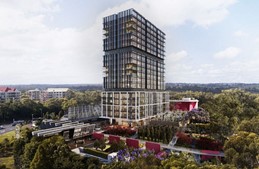
We have just found out about a proposal for an 18-storey office tower to be built on the Eden Gardens nursery site on Lane Cove Road, on the edge of Lane Cove National Park.
This would be the only high-rise building between Lane Cove National Park and the M2. It would also be the only tall building on the eastern side of Lane Cove Road. All other commercial buildings on this side of Lane Cove Road are further south on the other side of the M2.
Naturally, as it is bushfire prone land there will need to be a wide Asset Protection Zone. How much bush will be cleared to accommodate that? This building will stick out like a sore thumb over the treed skyline of Lane Cove National Park with light spill into the park that will impact on the nocturnal animals living in the park. More details will be on our website as they come to light.
Submissions are open until 21 May. Objections can be emailed quoting the number LDA2021/0095 to the This email address is being protected from spambots. You need JavaScript enabled to view it..
Look Up! A Powerful Owl Could be Sleeping in Your Backyard After a Night Surveying Kilometres of Territory
Picture this: you’re in your backyard gardening when you get that strange, ominous feeling of being watched. You find a grey oval-shaped ball about the size of a thumb, filled with bones and fur — a pellet, or ‘owl vomit’.
You look up and see the bright ‘surprised’ eyes of a powerful owl staring back at you, with half a possum in its talons.
This may be becoming a familiar story for many Australians. We strapped tracking devices to 20 powerful owls in Melbourne for our new research, and learned these apex predators are increasingly choosing to sleep in urban areas, from backyard trees to city parks.
These respite areas are critical for species to survive in challenging urban environments because, just like for humans, rest is an essential behaviour to conserve energy for the day (or night) ahead.
Our research highlights the importance of trees on both public and private land for wild animals. Without an understanding of where urban wildlife rests, we risk damaging these urban habitats with encroaching development.
One owl, one year, 300 possums
Powerful owls are Australia’s largest, measuring 65 centimetres from head to tail and weighing a hefty 1.6 kilograms. They’re found in Australia’s eastern states, except for Tasmania.
These owls have traditionally been thought to live only in large old-growth forested areas. However, Victoria has lost over 65% of forest cover since European settlement, and because of this habitat loss, the owls are listed as threatened in Victoria.
Their remaining habitat is extremely fragmented. This means we’re finding owls in interesting places — from dry, open woodland to our major east coast cities. This is likely due to the high numbers of prey, such as possums, that thrive alongside exotic garden trees and house roofs.
Powerful owls usually eat one possum per night, or 250 to 300 possums per year — mostly common ringtail and brushtail possums in Melbourne. They’re often seen holding prey at their roosting spots, where they’ll finish eating in the evening for breakfast.
This has ecosystem-wide benefits, as powerful owls can help keep overabundant possums in check. Too many possums can strip away vegetation, causing it to die back, which stops other wildlife from nesting or finding shelter.
Tracking their nocturnal haunt
But powerful owls are extremely elusive. With low populations, locating owls and researching their requirements is very difficult.
So, to help narrow down the general areas where powerful owls live in Melbourne, we used species distribution models and sought help from land management agencies and citizen scientists.
Over five years, we deployed GPS devices on 20 Melburnian owls to find how they use urban environments. These devices automatically record where the owls move at night and rest during the day.
We learned they fly, on average, 4.4 km per night through golf courses, farms, reserves and backyards looking for dinner and defending their territory. One owl along the Mornington Peninsula travelled 47 km over two nights (possibly in search of a mate). Another urban owl called several golf courses in the Melbourne suburb of Alphington home.
Choosing where to sleep
After their nightly adventures, the owls usually return to a number of regular roosting (resting) spots, sometimes on the exact same branch. The powerful owl chooses roosts that protect them against being mobbed by aggressive daytime birds, such as the noisy miner and pied currawong.
We found the owls used 32 different tree species to roost in: 23 were native, and nine were exotic, including pine and willow trees. This shows powerful owls can adapt to use a range of species to fit their roosting requirements, such as thick foliage to hide in during the day.
Owls will generally roost in damp, dark areas during summer, and in open roosts in full or dappled sunlight during winter to help regulate their body temperature.
Our research also shows rivers in urban environments are just as important as trees for roosting habitat.
Rivers are naturally home to a diverse range of wildlife. Using trees near rivers to rest in may be a strategic decision to reduce time and energy when travelling at night to find other resources, such as prey, mates and nests.
Rivers that constantly flow, such as the Yarra River, are a particular favourite for the owls.
The urban roost risk
These resting habitats, however, are under constant pressure by urban expansion and agriculture. Suitable roosting habitat is either removed, or degraded in quality and converted to housing, roads, grass cover or bare soil.
We found potentially suitable roosting habitat in Melbourne is extremely fragmented, covering just 10% of the landscape because owls are very selective about where they sleep.
Although there might be the odd suitable patch (or tree) to roost in urban environments, what’s often lacking is natural connectivity between patches. While owls are nocturnal, they still need places to rest in the night before they settle down in another spot to sleep for the day.
Supplementing habitat with more trees on private property and enhancing the quality of habitat along river systems may encourage owls to roost in other areas of Melbourne.
Powerful owls don’t discriminate between private land and reserves for roosting. So, conserving and enhancing resting habitats on public and private land will enable urban wildlife to persist alongside expanding and intensifying urbanisation.
So, what can you do to help?
If you want powerful owls to roost in your backyard, visit your local indigenous nursery and ask about trees local to your area.
Several favourite roost trees in Melbourne include many Eucalyptus species and wattles. If you don’t have the space for a large tree, they will also roost in the shorter, dense Kunzea and swamp paperbark (Melaleuca ericifolia).
Planting them will provide additional habitat and, if you are lucky, your neighbourhood owls may even decide to settle in for the day and have a snooze.
This article was published in The Conversation on 1 March 2021. It was written by Nick Bradsworth, John White and Raylene Cook from Deakin University
Wonderful Displays of Pink Flannel Flowers
The devastating fires over the Black Summer in the Blue Mountains have produced one remarkable display, the pink flannel flower (Actinotus forsythii). These flowers have been seen in burnt out areas from Katoomba to Lithgow and north to Newnes. The huge number of sightseers has caused the national parks rangers to institute traffic and parking control measures at easy access places like Narrow Neck.
The Pink Flannel Flower is special because of its ephemeral nature. It only germinates after conditions of fire and then good rainfall. It is believed that they germinate in response to bushfire smoke rather than heat.
Researchers at the University of NSW Centre for Ecosystem Science are aiming to find out more about the species, including how long their seeds can remain between fire events in a ‘deep dormancy’ before germination.
The smoke-derived chemical karrikinolide is the active ingredient to trigger the plants’ emergence. Lab tests involved creating so-called smoke-water infused with the chemical to prompt germination.
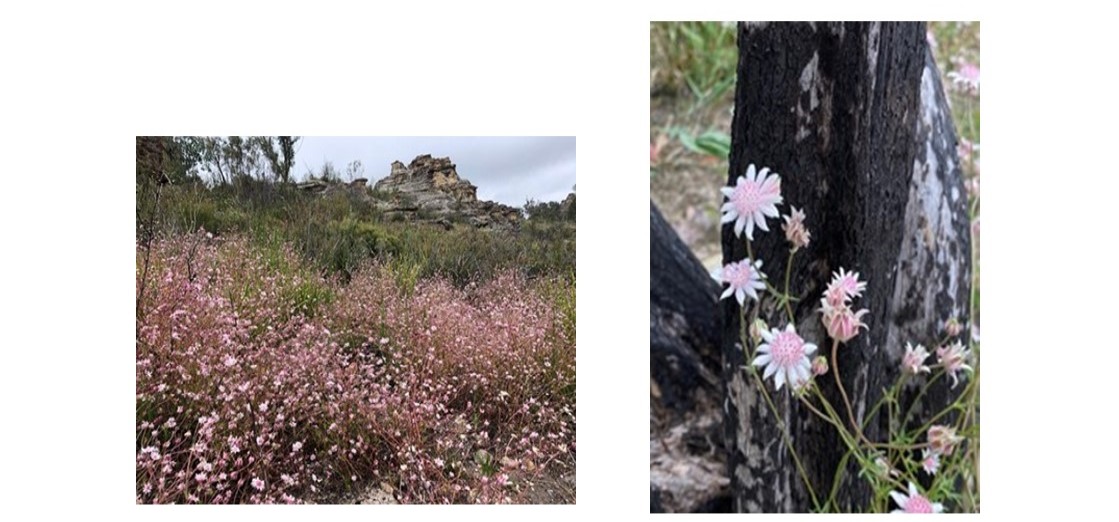
Left: View near State Mine Gully Road (Jill Green). Right: Narrow Neck close up (John Martyn)
Much Maligned Sharks

Arguably there are fewer animals in the world that are feared more than sharks. But the reality is that they pose little threat to humans. Our innate fear of them is heightened by a potent mix of Hollywood portrayal and media hype. The vast majority of the 1,050+ shark and rays in the world pose no risk what-so-ever, many of them are benthic, don’t have pointy teeth and will never interact with humans. But they are all tarred by the same brush.
Shark attack data
The top three ‘killers’ (white sharks, bull sharks and tiger sharks) collectively kill around one person per annum in Australia according to the Shark Attack File maintained by Taronga Zoo. More people are killed by bees or horses than are killed by sharks. Far more people are killed by falling branches. So, we really need to take a reality check on the risk sharks pose to humans. More importantly, we need to be sure our shark management policies are driven by scientific reality rather than irrational fear. Shark management policy need not be a hyper-political issue, the numbers simply don’t warrant the attention they get let alone the budget expenditure.
Shark behaviour
Sharks are grossly misunderstood. Unlike crocodiles, sharks do not eat people. They are naturally inquisitive and tend to explore the world with their mouths. Unfortunately, if a white shark takes an interest in a person in the water, the exploratory bite can be fatal.
Of the 28 or so encounters each year, on average one is fatal (ca 5%). The injured person will likely die from blood loss if they do not get immediate medical assistance. The key to saving lives is to stem the bleeding as quickly as possible. This means that while the number of encounters each year remains much the same, the number of fatalities can vary, largely due to luck; Where on the body was the person bitten, how far from shore are they, how quickly does help arrive, can the blood flow be stopped? Most years we have no fatalities, but some years there are several. 2020 was particularly bad with eight fatalities; the highest recorded for 90 years.
Sadly, our misplaced fear of sharks means that our ability to conserve and appropriately manage them is hindered by our prejudice against them.
Many sharks are at risk of extinction
The IUCN suggests that a quarter of all sharks and ray species in the world are at risk of extinction. They are among the most threatened group of animals in the world.
The main reason sharks and rays are so vulnerable to anthropogenic impacts is that they have slow life history traits: They live for a long time, take a long time to reach maturity, have few young each year, often skip breeding season and have long gestation times (many are longer than humans). Collectively this means that their reproduction capacity is very low and they simply can’t rebound from impacts quickly enough.
Netting does not only kill sharks
Apart from overfishing (ca 50 million sharks are killed by the fin trade each year alone), the next greatest threat to many shark species is ‘shark control’. Many state governments have bather protection programs that involve a mix of management strategies. Sadly, many of them are lethal to sharks and other collateral species. Perhaps the most widely used and grossly inappropriate management action is shark netting. Contrary to popular belief, shark nets are simply a fish net suspended in the ocean off popular beaches. They do not act as a barrier, rather they catch animals indiscriminately.
Data from the 2017 shark netting program in NSW showed that not a single target shark (white, tiger or bull) was captured but 65 other animals were, including endangered species such as turtles, hammerhead sharks, grey nurse sharks and devil rays. 77% of the animals where dead by the time the nets were checked. Data from the 2019–20 season were much the same but on a larger scale. 480 animals ensnared, 90% of them non-target species, 284 of them dead, including dolphins.
These shocking statistics has led to wide-spread criticism of this program and many local councils are announcing bans on shark nets on their beaches. Of course, it’s likely that all these dead animals stuck in the nets actually attract sharks, many of whom are happy to take a free lunch.
Drum lines are another management approach. These are effectively hooks with bait on the end and of course they are equally indiscriminate. Some have argued that the baits actually attract sharks rather than deter them. The trouble with this system is that someone has to physically check the hooks. Often by the time they are checked, whatever has been caught has long since died. This may further attract sharks to the area.
There has been a shift towards ‘smart drum lines’ which are basically the same thing as a regular drum line, but they are fitted with an alarm. When an animal is hooked, the alarm goes off and prompts someone to check the line. This does improve the likelihood that the animal will survive the encounter.
What happens to the shark that is caught by drum lines is also controversial. In some instances, if the animal is a target species, it is simply shot. In other cases, it is moved offshore and released (with or without a tag). The trouble with both approaches is that many of these target species, particularly tigers and white sharks, move incredible distances and are mostly unpredictable. So, moving a shark offshore is only a short-term benefit from a swimmer safety perspective, till that shark or another one swims back again. Because these animals literally roam the ocean, shooting or removing sharks has no locally discernible impact either on shark numbers or shark bite statistics. In other words, it’s largely a political stunt that has no basis in science. The only benefit is that if the shark is tagged, that data makes a contribution to our understanding of shark movements and behaviour.
There are smarter alternatives
We already have the capacity for more common-sense approaches to managing human-shark relationships. Part of the solution is education. People need to realise the risk is small, but exists none-the-less. We need to take responsibility for our behaviour and the decisions we make. A shark is just being a shark when it bites a person, they are not being malicious. We humans are entering their environment and we need to be respectful.
A useful comparison is our laws regarding jay-walking. It’s illegal to randomly walk across a busy road or highway within 20 m of a pedestrian crossing because it’s dangerous; You could be killed by a car. If an incident does happen, its largely the pedestrian’s fault not the driver’s. The same common sense applies with entering the ocean; there are risks and if you get bitten by a shark, it’s not the shark’s fault.
Our understanding of shark behaviour also means that we can be a little smarter about when and where we go swimming. Dawn and dusk are periods of high shark activity, thus the risk at these times is slightly elevated. Obviously, one should not swim close to seal colonies, or near big schools of fish. River mouths after rainfall event should also be avoided. Swim with a buddy and tell people when and where you are going.
Drones are a better idea
New technology is also coming to our aid. Busy beaches can be monitored by drones. Drones connected to blimp-like balloons can stay afloat for long periods of time. They can stream images direct to a ground station and artificial intelligence can identify and track sharks in real time. Bathers can be warned that a shark is in the area and they should leave the water. We would be far better investing in this kind of approach than continually wasting time (and lives) on shark nets and drum lines that just don’t work.
Using our smarts and taking responsibility for our actions will go a long way towards harmonious human shark relations.
Prof Culum Brown gave us a fascinating talk about his research into shark behaviour. He has kindly sent us a summary of his talk
Glyphosate Confirmed as Safe to Use but not Everyone Agrees
Glyphosate, most commonly marketed as Roundup, is extensively used as a herbicide in agricultural areas and bushcarers know how effective it is in controlling weed invasions in native vegetation woody weeds such as privet and ground covers such as Ehrharta. In recent years its safety has been called into question.
Glyphosate was developed by Monsanto and came onto the market in the 1970s. In 2015 the International Agency for Research on Cancer (IARC) determined that glyphosate may be capable of causing cancer, but did not specify the circumstances, since that was beyond the IARC remit.
This decision led to three court cases in the US where huge damages were awarded to people who developed non-Hodgkins lymphoma. In each case they found that Monsanto had not provided adequate information about the risks of using glyphosate-based products. The people involved had repeatedly come into direct contact with the chemical and were not aware of the need to take the precautions.
The response to these events has been a ban of its use in some countries and in some council areas in Australia. This is despite the announcement by the European Food Safety Authority that glyphosate ‘is unlikely to pose a carcinogenic hazard to humans’. Similar conclusions have been reached by regulatory authorities in Australia, the US, Canada, Japan and New Zealand.
How does it work?
Glyphosate is absorbed through foliage and transported to growing leaves. It interferes with the shikimate pathway used to produce some amino acids. Animals and people lack this pathway so they are not harmed by the presence of the chemical in the food they eat.
Earlier this year at the AGM of the Australian Association of Bush Regenerators, Tim Low gave a talk on glyphosate. Tim is author of the best-selling book Feral Future, he helped found the Invasive Species Council and recently wrote an assessment for them called Glyphosate: A Chemical to Understand. The following information gives a brief summary of this very detailed paper.
Tim explained that the danger posed by a chemical can be assessed in two ways:
- a hazard assessment simply asks if a substance is capable of causing harm
- a risk assessment asks if it can cause harm under conditions of exposure
The IARC determined that glyphosate may cause cancer but so does exposure to the sun, eating salami or drinking wine. The risk is determined by the circumstances and level of exposure.
The Australian Pesticides and Veterinary Medicines Authority is an independent statutory authority that is responsible for testing the safety of pesticides. They commissioned a report from the Office of Chemical Safety. This review led the Australian Pesticides and Veterinary Medicines Authority to restate a previous finding that glyphosate is safe to use if the safety instructions are followed. The safety instructions include advice to wear the likes of ‘safety shoes, overalls, gloves, safety glasses’ when using concentrates and ‘wear gloves and wash hands after use’ for home garden mixes.
The opinions expressed by other experts quoted in the paper vary and are often qualified by the context of frequency of use and observation of exposure precautions. Some still say it should be avoided.
Are there any effective alternatives?
A pesticide expert at the University of Sydney, Professor Ivan Kennedy, says that ‘any’ replacement is likely to be more damaging to human health, and a herbicide expert at the University of Adelaide, Dr Chris Preston, says that glyphosate is safer than the alternatives, and better for the environment because there is no residual toxicity. This long persistence in the environment can impact on waterways, seagrass and algae.
In some cases, new chemicals appear to be better because there is less research on their impacts. Glyphosate has been studied far more intensively than the current alternatives. For example, Atrazine has caused tumours in female rats but the significance for humans is unknown because, the IARC decided, too little is known about atrazine to assess its carcinogenicity.
Most of those who argue against glyphosate do not acknowledge the chemical world we live in. One Guardian article noted that glyphosate ‘traces are commonly found in our food and even our bodily fluids’ but this is the case with many other chemicals.
Experience with non-chemical methods
Byron Shire Council moved to ban glyphosate in 2013 when councillors passed a resolution aspiring to end pesticide use in highly frequented public places. Council officers tried slashing and brush cutting instead but roadside weeds increased in diversity and spread, and potholes formed where weeds undermined the road. Current policy is to use herbicides to control priority weeds on roadsides, and strive to replace weedy roadside grasses with low-growing desirable plants.
Byron Council has largely eliminated herbicide use in urban areas. The council purchased a steam weeder but it will only kill annual weeds, so is unsuitable for most environmental weeds. Steam has to be used carefully because of the risk of burns, and only suits areas with vehicle access.
Hobart City Council trialled steam with disappointing results. Many weeds needed repeated treatments. It was estimated that the city-wide use of steam would cost more than ten times more than the use of glyphosate.
In Perth one council trialled alternative methods on clovers and other small weeds growing beside a gravel trail, achieving some success with mulch, steam, pelargonic acid, pine oil, and salt and vinegar. There was no suggestion that these methods will work against larger weeds. Trials are ongoing.
Weed control becomes as much more labour-intensive process if herbicides are not used. Non-chemical methods of control, especially steam spraying, can be used against some very small weeds in city parks and ovals. They do not kill larger weeds in parks, nature reserves and on farms.
Current opinions of the use of glyphosate
Farmers
The National Farmers’ Federation has said farming cannot survive without glyphosate, presumably because of poorer weed control from other herbicides (and lower yields under organic farming). The president, Fiona Simson, also pointed out the environmental benefits of glyphosate. Farmers can spray the weeds that emerge in bare fields rather than killing them by tilling, which disturbs soil structure and soil biota, increases soil erosion and loses moisture. Defending glyphosate, Simson said:
New practices like low- and no-till cropping have radically reduced our greenhouse gas emissions, improved the quality of our soils, and taken water use efficiency to new heights.
Bush regenerators
Glyphosate is the main herbicide used against bushland weeds, and a ban would undermine environmental goals. After the American court cases the president of the Australian Association of Bush Regenerators, Dr Tein McDonald, said that bush regenerators:
… do not want to discard a highly important tool from our conservation toolbox without sound justification.
Adam Muyt in his book Bush Invaders of South-eastern Australia (2001), states that, of the many methods to control weeds in bushland reserves (which include fire, mulching, slashing, grazing and scalping), herbicides:
… offer the only really effective treatment for removing many of the more tenacious and aggressive invasive species.
Unlike on farms, glyphosate is usually applied in a discrete and targeted way, with stem injection or a cut-and-paint application to individual plants. Admittedly, on large scale weed invasions, it is sprayed on foliage and some spray drift can then occur. Methods like cut and paint avoid the need to disturb the ground to dig up weeds, creating bare ground that invites further weed germination and can cause erosion.
On a larger scale glyphosate is often the most effective means of controlling weeds of national significance such as gamba grass in the Northern Territory. This grass was imported as cattle feed but areas that are not eaten create hotter fires. Around Darwin fire-fighting costs have increased significantly.
References
Tim Low (2020) Glyphosate: A Chemical to Understand (Invasive Species Council, Fairfield, Victoria)
Adam Muyt (2001) Bush Invaders of South-East Australia: A Guide to the Identification and Control of Environmental Weeds Found in South-East Australia (RG and FJ Richardson, Meredith, Victoria)
At Last, a Recovery Plan for the Grey-headed Flying-fox
It is 20 years since the Grey-headed Flying-fox was listed as a threatened species under NSW and Commonwealth legislation. This legislation requires that a recovery plan is prepared and implemented. Getting the Australian government and the states (Victoria, NSW and Queensland) to agree on the plan has been frustrated by political pressure many times.
In 2017 there was a serious attempt to delist the flying-foxes. Fortunately, the Australasian Bat Society prepared a strong submission to the Parliamentary Inquiry set up to address the issue of flying-foxes.
Finally, the national recovery plan is no longer a draft and it came into effect under the Environment Protection and Biodiversity Conservation Act on 19 March 2021.
The plan is written clearly and contains useful summaries of the biology and ecology of the species. The actions will need pressure from the community to ensure they are implemented.
Flying foxes are critical to the pollination of eucalypts, in particular, throughout Australia. It is probably not accidental that most eucalypts on the East Coast are white flowered so their blossoms can be seen at night. Even Turpentines, which have a much higher flow of nectar at night, provide a ‘high octane fuel’ needed for these blossom-feeding mammals.
